Pokémon: Let's Go, Pikachu! (Nintendo Switch) Review
By Rudy Lavaux  23.11.2018
23.11.2018
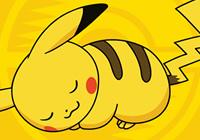
It's been a long time coming, but at long last Nintendo players can play their Pokémon RPG on their TV set again, as well as take it on the go for a Kanto adventure just like back in the 1990s. Sure, there have been attempts at home console Pokémon RPGs back on the GameCube but nothing like a proper big adventure to catch them all on the bigger screen, so there certainly was a lot of anticipation there. It is important to bear in mind from the get-go that these are not the future of the series, as the future lies with the 8th generation games aimed for release in late 2019. Nintendo, however, did not call this game anything, really. It certainly wouldn't call it a spin-off, so it's up to Cubed3 to determine what exactly it is and who this is aimed at, although the title should already give a pretty good idea.
The Let's Go games, by and large, are both a remake and a re-imagining of the original Generation I releases, more so of Pokémon Yellow, which had redesigned character and Pokémon art, as well as added plot twists to bring the universes of the games and animated series closer together. Pokémon: Let's Go, Pikachu! and its counterpart are very much remakes in the sense that the in-game maps are almost 1:1 conversions of their old 8-Bit Game Boy roots, albeit with a shiny new coat of HD paint thrown on top. Map design retains a lot of the tile-based nature of the original, which kind of holds back what is possible artistically within that universe. In that sense, players will have to wait for what is hoped will be next year's release of the true 8th generation games on Nintendo Switch, to get a proper gander at what a proper Pokémon title developed from the ground up for a HD capable system can look like. The simpler approach has its advantages since this allows the Switch to run at a full 1080p docked, or at least it appears to be the case, and full 720p in portable mode, although capped at 30fps. Small performance hiccups can be witnessed, mostly when a menu is open or when calling the partner Pokémon to perform a field action. When moving around the world inhabited by lots of little creatures, though, such hiccups if they exist are not noticeable at all. It will be interesting to see how much of that performance can be retained with possibly a more open world approach in next year's entry.
Both games are, however, also re-imaginings and not just straight up remakes in the sense that they do bring to the table certain new things. The hero and his/her rival set out from Pallet Town, just like in the original, but they are not Ash/Red and Gary/Blue anymore, but a new generation of trainers wanting to be the very best Pokémon Trainers in the world, like no one ever was. Moreover, the quest will not feel quite the same as before, either. The biggest change, and one that does not come from the mainline games at all but rather from Pokémon Go, is that Pokémon encountered in the wild are not battled anymore, they can only be caught and they in fact do not appear at random, but can be seen roaming the environment freely, even walking out of the tall grass where they spawned from.
Catching a wild Pokémon by simply throwing Pokéballs at them, without the need to weaken them first, replaces the traditional wild battles that helped train captured Pokémon. Therefore, the simple act of catching them feeds battling experience to caught creatures. This is a simplified way of doing things so as to lure in players who never had to battle wild Pokémon before to catch them... or, in short... Pokémon Go players. There's a reason why this was built with the ability for those to bring over the monsters they caught in the real world in the Switch game by means of the newly added Pokémon Go Park, which replaces the old Safari Zone.
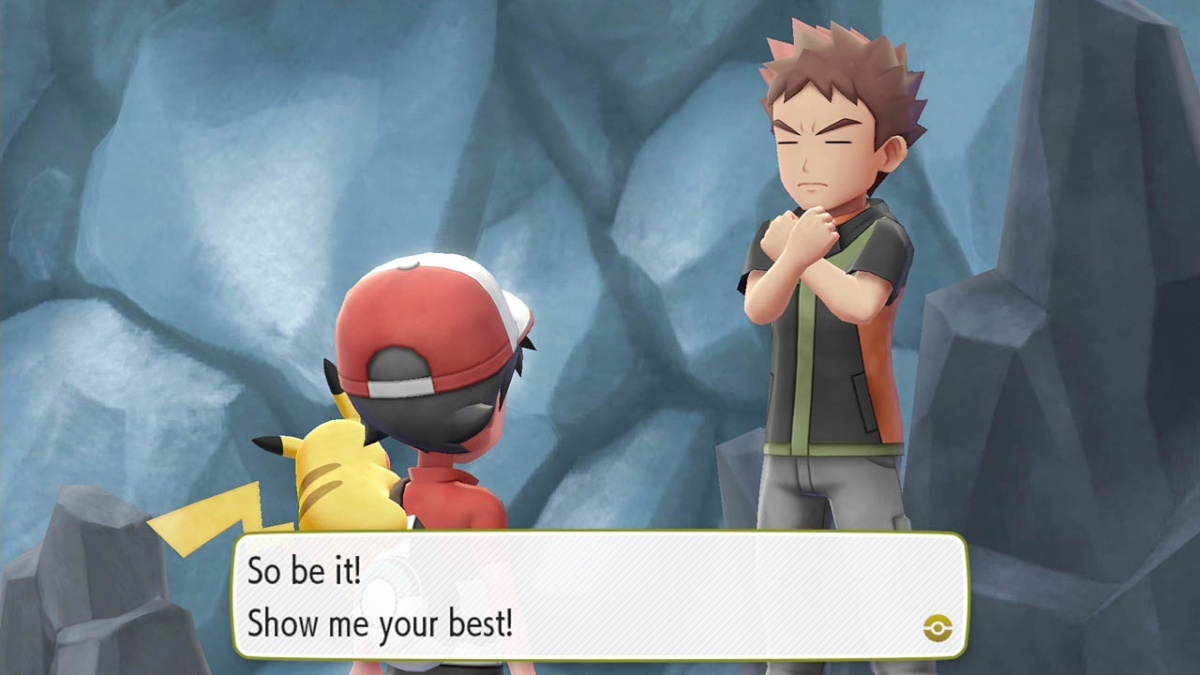
Indeed, now pretty much the whole game is a giant Safari Zone where wild Pokémon are not fought anymore but only caught and food can even be thrown at them to pacify them and make the process easier. Other carry-overs include Mega Evolutions... but not Z Moves. This is a really symptomatic thing that is noticeable all the way through, that wherever there were two similar things that could be carried over, one was and not the other, likely in an attempt to get Pokémon Go players to know some of these more advanced mechanics, but not overwhelm them with 20 years' worth of advancements that each new entry has brought to the table. Another example is that of IVs or Individual Values, which while present originally as DVs or Determinant Values, worked differently. They now work here exactly as they have in more recent games with values ranging. EVs or Effort Values, which in every game since Generation III have been somewhat hidden stats gained by Pokémon through use of stat boosting items or through battling... are not gone altogether but replaced by a new system called Awakening Values or AVs. This works similarly to EVs but with a new set or rules. The important thing to remember about them is that they lead to possible maximum stat values way higher than they have ever been in the series. This changes the game for competitive play, to say the least, but also means that a player willing to invest the effort to fully IV train, AV train, and experience train a Pokémon with the right nature could build a powerhouse of mass destruction that would ridicule any NPC trainer. This can be seen as either very silly for people who have been in competitive play for a long time or absolutely awesome - regardless, it's a fresh change.
Interestingly, a mechanic that is not completely new but refined from a past generation is Pokémon Catch Combo. The more a player catches Pokémon of the same species in a row, without letting one escape, which would break the combo, the higher the combo and the higher the chances are that a more rare species may appear in the area, or that a shiny Pokémon may spawn. Moreover, the battle rewards in experience points and dropped items also become better the higher the combo gets. This reminds a lot of the Pokéradar from Generation IV and VI games where sounding it would make patches of grass shake of even shine, ensuring that the same species could be encountered again and again, and this too would increase chances of a shiny encounter, so this is not entirely new, but re-imagined.
Another such example of carry-over is Pokémon gender, which does feature in those games, whereas Pokémon breeding is nowhere to be found. This has been a staple of the series in every generation except Generation I where Pokémon gender hadn't been properly introduced yet. Granted, Let's Go is based on Generation I, so getting rid of it for the sake of simplifying things for newcomers or for the sake of fidelity is understandable. However, this sacrifice is made without any consideration for convenience. Being able to duplicate unique breedable Pokémon that can only be obtained once over the course of a single playthrough ensured that those unique Pokémon could be traded without fear of losing those permanently, helping Pokédex completion.
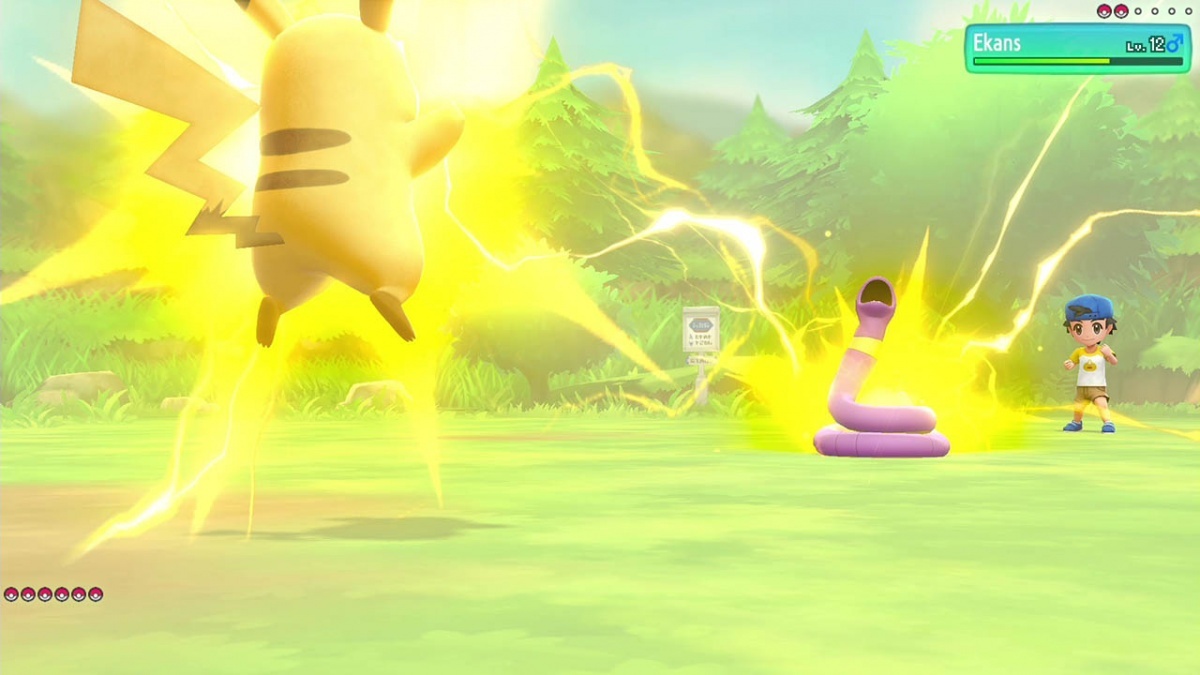
Here, players get to choose only one of the two fossils, just like in Generation I, and have to suffer the pain of being likely forced to part with their collection if wanting to add to their Pokédex the entry for the other Pokémon not-picked, meaning that anyone willing to capture every single Pokémon will have to do so at the expense of another player sacrificing their unique Pokémon, unwittingly or generously willingly, which players of Pokémon who played those games for the first time with Generation I still have bitter memories thereof to this day. The absence of breeding also means no more IV breeding (items that would help with this simply do not exist here or could not be held by Pokémon anyway since item holding is also gone) or shiny breeding. People looking to train up the best possible Pokémon for competitive play, with IVs as close to perfect and with the right nature, are therefore stuck to using bottle caps, as introduced in later generations, to achieve the same result but this is reserved for post-game players and not immediately accessible.
At the end of the day, some things that were simplified brought with them some neat improvements to convenience, while on the other hand, some of them made things more cumbersome than they needed to be. One last example is in the implementation of online play. There is no GTS, or Global Trading Station anymore, reinstating the need to actively look for other players, online or in the real world, looking for people willing to trade. This is not just simplified, this is the loss of a convenient tool that has been with the series for a long time and which is now gone. One thing is for sure, though, and this concerns the matter of "intent." If the intent was to bridge the mechanics of Pokémon Go and the more traditional games together to help bring Go players halfway across the void that separates both worlds and entice them to finish their conversion next year by picking up the next big entry in the series, which can only be hoped will be the fully fleshed out experience that old time fans are hoping for... then the Let's Go! games are a resounding success in that sense.
This question of intent is tremendously important: simply looking at what they were going to be named all along, it is obvious that Nintendo was going more for the Pokémon Go audience than for the old-school one, but it was not going to advertise it loudly as such as there was certainly some hope that old fans too would dive in, to keep themselves occupied until the 8th generation finally arrives. Those fans picking these up, if they go in with their expectations unchecked, are in for a massive disappointment. If those fans can, however, accept these for what they are, understanding perfectly what the intent was and approaching them with that mindset, they are likely to find that there is still plenty of enjoyment to be had, even for them.
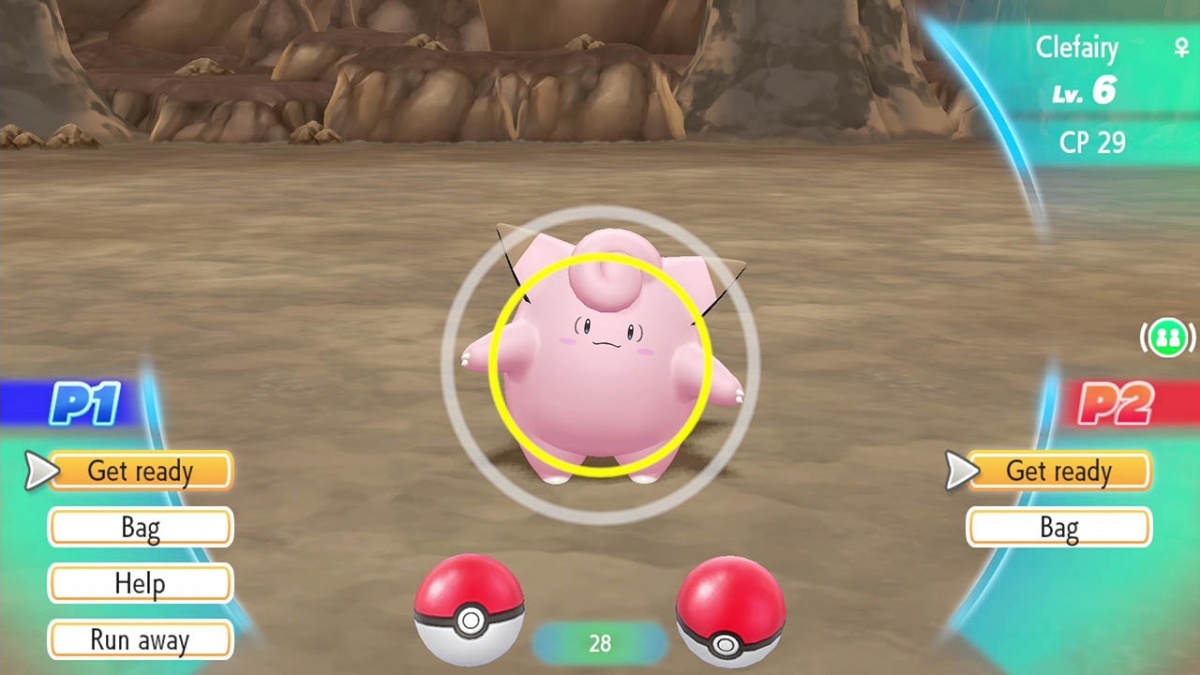
There is, however, one issue that has to be addressed and that is a matter of controls. In docked mode, as many readers probably already know, the only way to control the game and more importantly to catch Pokémon is to use a single Joy-Con or the Pokéball Plus accessory, which, not supplied by Nintendo, could not be tested with the game for the sake of this review. Controlling everything, navigating menus and so on with a single Joy-Con is... cumbersome. It takes a while to adjust to but it becomes second nature eventually. This one-handed approach, however, has been tried before and done better by Artepiazza in Opoona for Wii. This had to be mentioned. This is not the least of worries, though, as the real problem arises when catching Pokémon. In handheld mode, a single button can be used to throw a Pokéball, while gyro controls let the player pan the camera around to keep the wild Pokémon centred on the screen, so as to more easily aim at it. This is easy and comfortable. In docked mode, there is no way at all to pan the camera around, which means that if the wild creature is off-centre, it's up to the player to aim more to the left or right with their motioned gestures with the game providing no cross-hair to show where the player is aiming, all while timing it right so that the Pokéball hits the critter at the right moment to increase chances of a successful capture and while carefully controlling the strength of the swing, so as to not let the Pokéball roll pitifully on the ground or to overshoot it over the Pokémon's head.
This is... a mess. It brings nothing good to the table but lots of wasted Pokéballs, broken catch combos resulting from Pokémon eventually running away... and a ton of frustration or downright saltiness for the player, which is certainly not good for their health. The game has this wonderful control scheme built-in for handheld mode that works just fine and Nintendo knew from people trying the game out before release that there was concern around those controls... yet it did not implement the same scheme as an option for docked mode. This makes the game hard to recommend to be played in docked mode since handheld mode is simply much easier and, even admitting that there is fault on the player's part, this set-up simply isn't comfortable for couch play, and this has to either go away completely for the next game, or at least the handheld mode controls need to be added to docked mode, short of simply bringing things back to basics like in the older games, so as to make things way more comfortable to play, purely and simply. It is in fact mind boggling that, catering for Pokémon Go players so much, the touch screen isn't used at all for Pokémon capture in handheld mode, as that would have made a lot of sense. Moreover, because of the prevalence of Pokémon catching to even train captured creatures, this makes training monsters in docked mode more of a pain than it needed to be and less convenient even in portable mode, compared to other games where this can be done comfortably while partaking in another activity like watching TV or something. Not every change for the sake of simplicity had to be made, and controls are one such regrettable change.
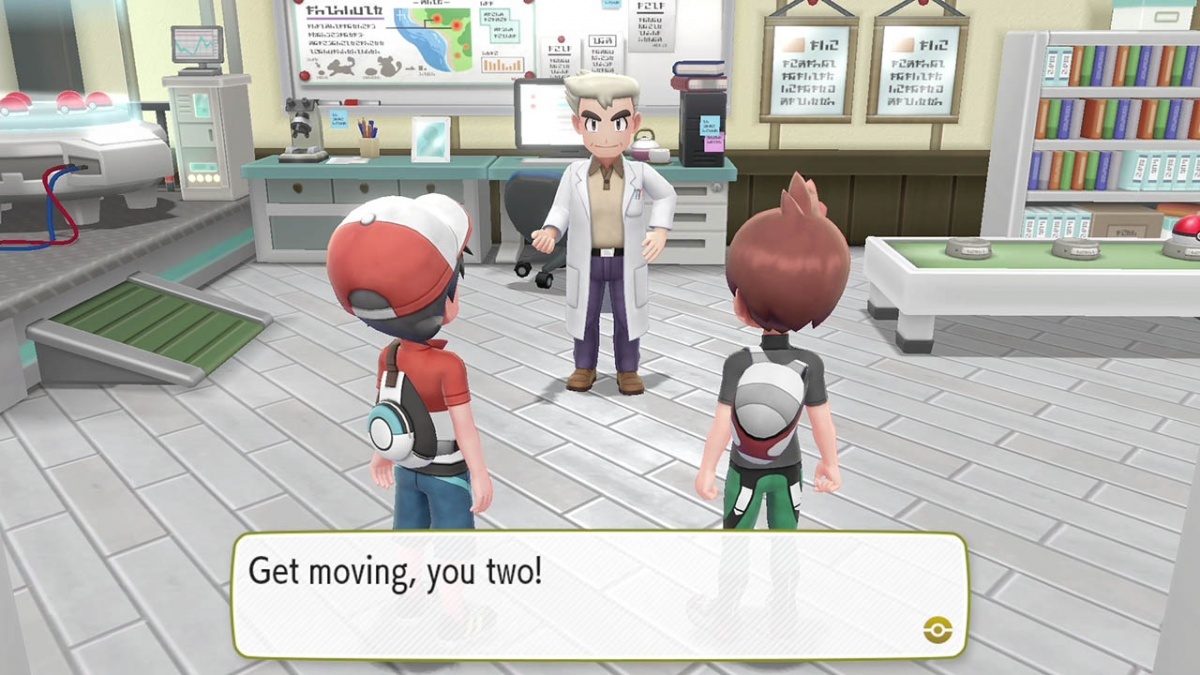
Cubed3 Rating
Very Good - Bronze Award

Pokémon: Let's Go, Pikachu!, as well as its almost identical counterpart, succeeds brilliantly at bridging the worlds of Pokémon Go and the mainline entries, combining evolved, simplified or even revised mechanics from both worlds into what is, make no mistake, a spin-off from the main franchise and not an actual new mainline game. Changes may not be to every old time fan's taste but diving in with expectations kept in check, everyone may find in there a lot to be enjoyed, both for fans of Pokémon Go or the modern games... or even fans of both who will best be able to appreciate it. Controls are, however, a real issue and make things more frustrating than they need to be, holding back what is otherwise a truly brilliant package. A patch to make handheld controls available in docked mode would go a long way to alleviate much of that frustration...

![]() 7/10
7/10
![]() 0
(0 Votes)
0
(0 Votes)
 Out now
Out now  Out now
Out now  Out now
Out now  Out now
Out now Comments
Comments are currently disabled

 Sign In
Sign In Game Details
Game Details Subscribe to this topic
Subscribe to this topic Features
Features





 Top
Top

